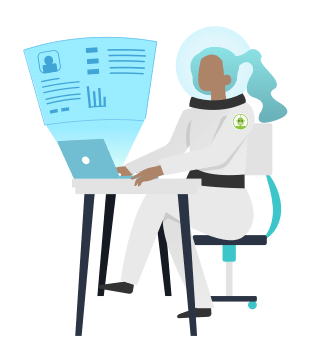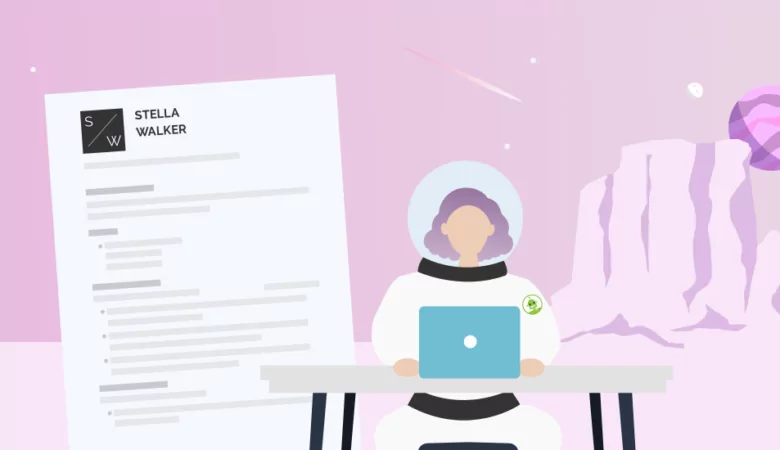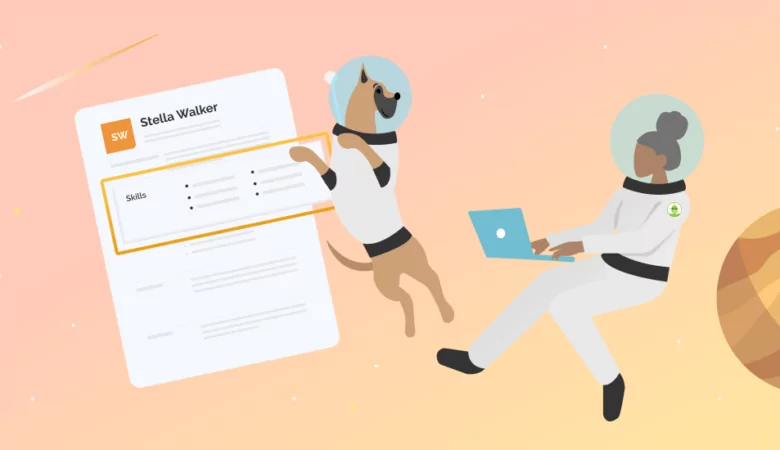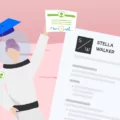To write the best resume, you must make the resume perfect for a specific job application. Here's how you can do that.

How to Tailor Your Resume for a Job Search
Tailor Your Resume
Your resume helps show a recruiter that you’re the right person for a specific job. However, while many see resumes as simply listing your past job titles, skills, education and more, it’s far more than that. A great resume can match you up perfectly to a job application, making you more likely to get the job.

Why Do I Need To Tailor My Resume?
A generic resume is a great way to get your skills, experience and education out there, but that shouldn’t be the resume you hand in. You need to tailor your resume to each job description for three important reasons.
-
Issues with applicant tracking systems (ATS)
An applicant tracking system (ATS) will automatically scan your resume when you apply to an open position, looking for certain keywords and job requirements. If you don’t optimize your resume for a particular job, it’s much more likely that the ATS will reject it before it reaches a hiring manager.
-
Wasting space on your resume
Most people only need a one-page resume. If you include all the potential skills and experience that a hiring manager might want to see, it’s more likely that you’ll run out of space. You'll use all your space effectively by cutting down your resume to whatever makes you the ideal candidate for a specific job.
-
Boring the hiring manager
Quite simply, a hiring manager has to read hundreds of resumes from job seekers every time they need to fill a position. You need to impress the hiring manager by bringing in the skills and experience that meet the needs of a specific job description.
Resume Structure
Although it may change slightly depending on your resume format, your resume should include the same general sections.
Resume header
Start with your resume header. This is a basic component of resume templates. Here, you’ll include your contact information: phone number, email address and any professional social media links, such as your LinkedIn profile.
Resume summary or objective
At the top of your resume, you want a two- to three-sentence paragraph that presents the most important information to a hiring manager. If you have several years of experience, you’ll use a resume summary, which goes over your most important experience and achievements. If you have less experience, you’ll instead use a resume objective, which goes over your skills, education and goals.
Skills
The skills section will include eight to ten important skills for your job, all using snappy bullet points. All resumes should consist of both hard skills, which are skills you learned for this specific job, and soft skills, which are generally transferable.
Work experience
Your work experience section should include all relevant experience from the last 10 years. If a job title doesn’t seem like it relates to the job you’re applying for, include an explanation that connects your job duties to the current application. If you have more than 10 years of experience, include it in your LinkedIn profile to free up space.
Education
If you have a college education, include it in your education section even if it doesn’t seem relevant to your position. Otherwise, include your high school diploma. Tend toward using college honors, such as Dean’s List and cum laude honors, rather than your GPA.
Additional sections
Finally, some resumes might benefit from additional sections, such as certifications, internships and volunteer work. These sections will vary depending on how you write your resume and how other resume samples look.
3 Top Tips for Tailoring Your Resume
Once you have this general format in the ResumeNerd resume builder, how do you turn your resume from generic into a specific one? Follow these three tips.
-
Mirror the job posting’s language.
First of all, consider the language in the job posting itself. By subtly mirroring it, whether it’s extremely professional, slightly casual, or somewhere in between, you can make it seem like you’ll fit in easily.
-
Spotlight relevant achievements.
The most important achievements to include near the top of your resume are the ones that seem the most important. If you’re applying to a job that’s looking for a successful sales representative, you’ll want to show off high conversion metrics rather than the fact that you built a new sales structure at a previous job.
-
Use the right resume keywords.
Resume keywords are terms that a hiring manager uses in a job description to indicate the type of applicant they’re looking for. Read through the job description, highlighting all the keywords you see. Then, use as many as possible while writing your resume. This technique can get you more job interviews because it shows you as the right candidate for a new job.
FAQ: Tailor Your Resume
A resume should be about one page long. Some candidates can do well with a two-page resume, but you need more than a decade of experience to use two pages. Stick to one full page, cutting down on anything that pushes you over it.
Yes. All resumes can benefit from cover letters. They help you showcase even more ways you meet the job description and allow you to connect with the hiring manager during your job search. Use the ResumeNerd cover letter builder to create your own.
You might need multiple versions of your resume for different applications. The ResumeNerd resume builder makes it easy for you to create your generic resume, then you can tweak it slightly to meet the needs of different jobs.








